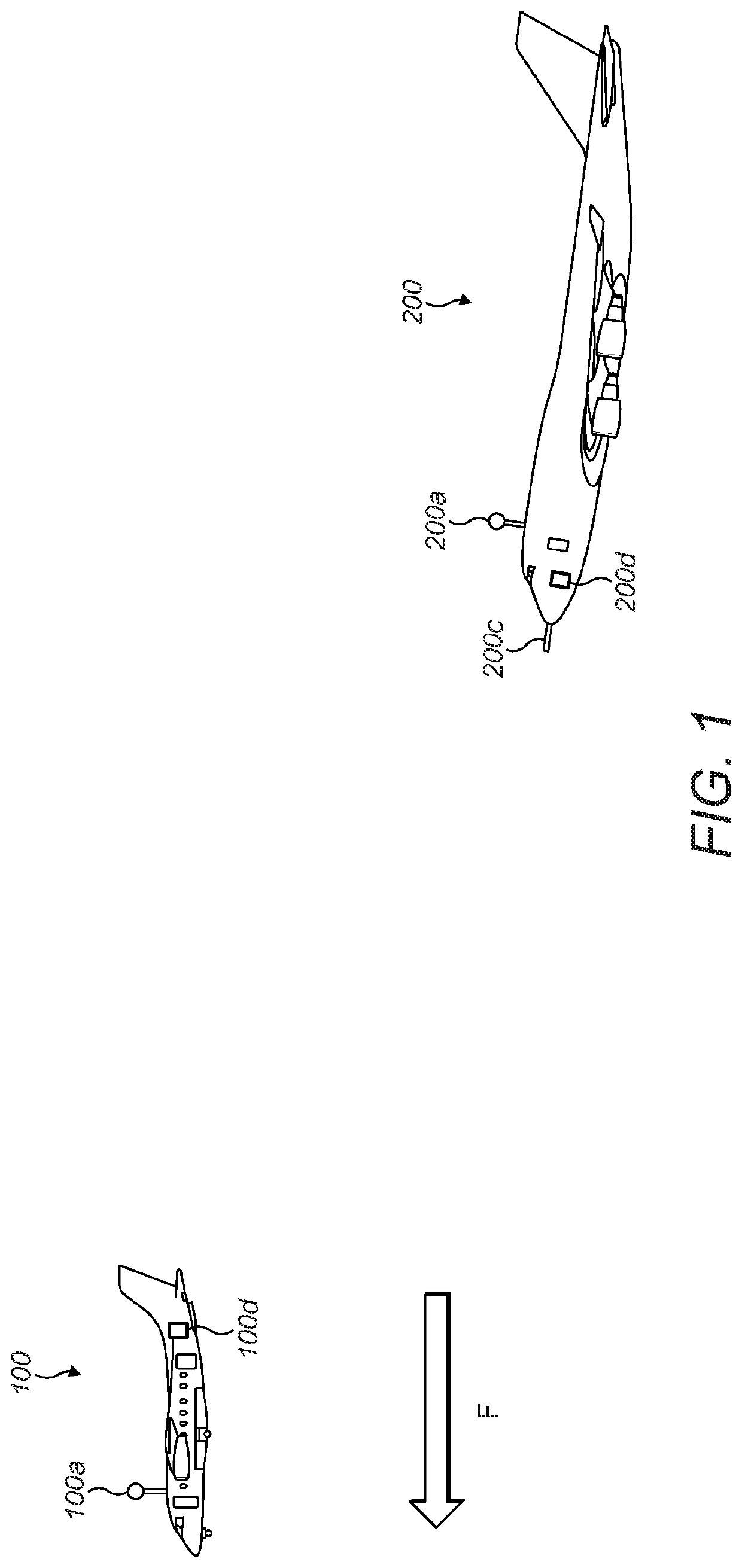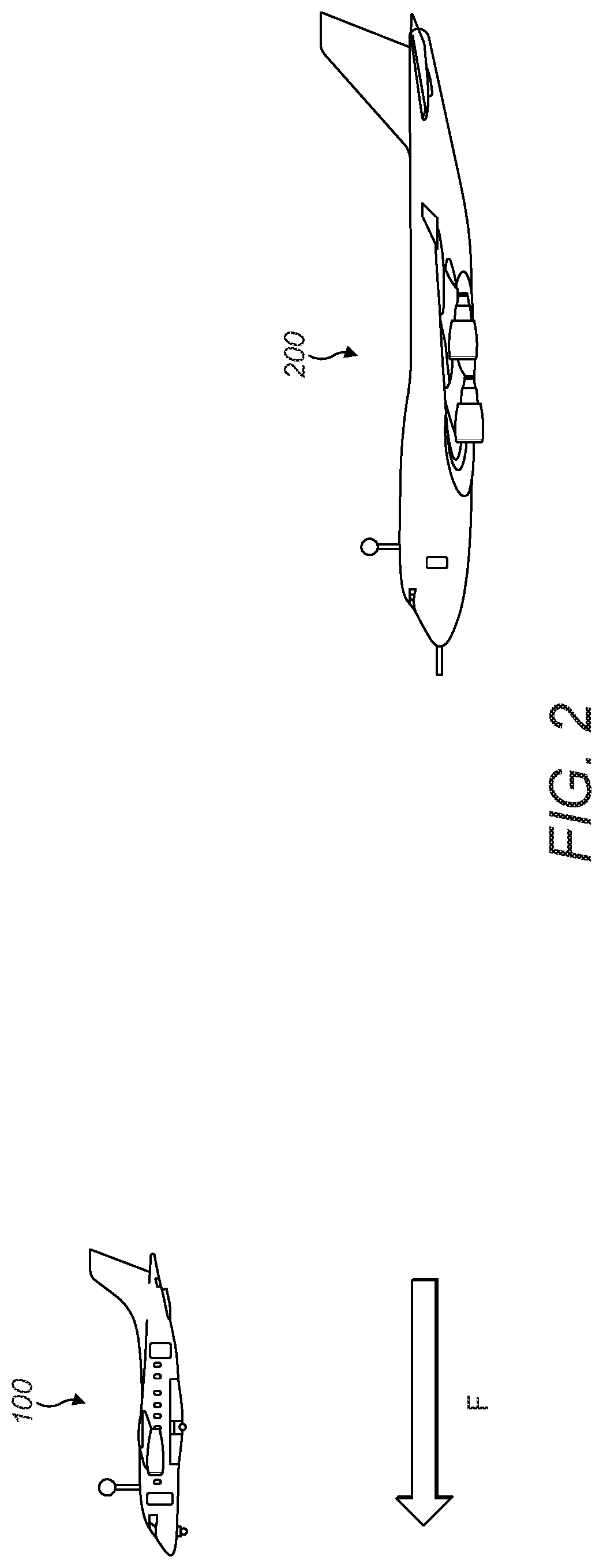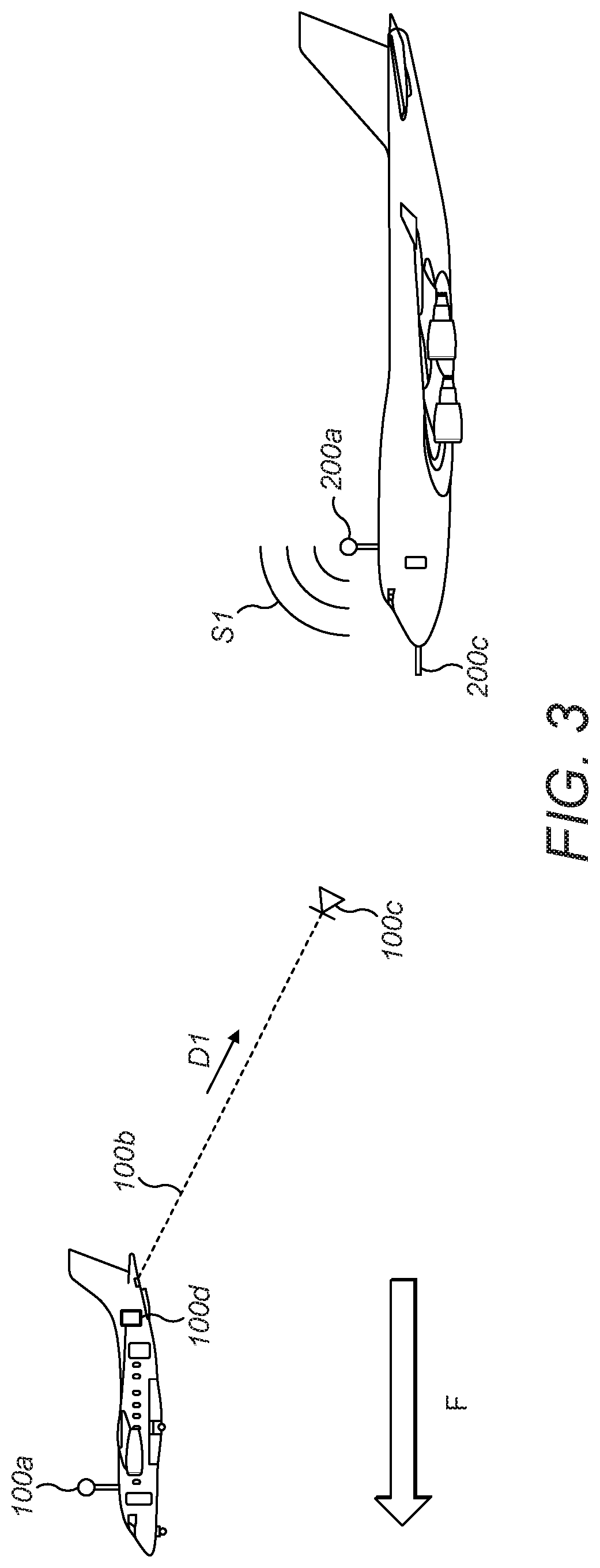Methods and systems for in-flight fuelling of aircraft
- Summary
- Abstract
- Description
- Claims
- Application Information
AI Technical Summary
Benefits of technology
Problems solved by technology
Method used
Image
Examples
Embodiment Construction
[0042]FIG. 1 shows a fuel receiver aircraft 100, which is a commercial airliner. The receiver aircraft 100 is flying straight and level in a forward direction F at a constant speed. In other words, the receiver aircraft 100 is being flown at a steady cruise.
[0043]The receiver aircraft 100 comprises a communication unit (e.g. including an antenna) 100a. The receiver aircraft 100 further comprises a cable drum unit (not shown in the Figures) which is located in the tail section of the aircraft 100. In this example the drum is a motorised, multi-speed, geared drum which is articulated such that it can be disposed in any orientation relative to the direction of travel of the receiver aircraft 100. The cable drum unit houses a cable 100b (not shown in FIG. 1) which is wound around the drum, one end of the cable 100b being fixedly attached to the drum. In this example the cable 100b is constructed from steel. Alternatively the cable 100b may be constructed from some other material having ...
PUM
 Login to View More
Login to View More Abstract
Description
Claims
Application Information
 Login to View More
Login to View More - R&D
- Intellectual Property
- Life Sciences
- Materials
- Tech Scout
- Unparalleled Data Quality
- Higher Quality Content
- 60% Fewer Hallucinations
Browse by: Latest US Patents, China's latest patents, Technical Efficacy Thesaurus, Application Domain, Technology Topic, Popular Technical Reports.
© 2025 PatSnap. All rights reserved.Legal|Privacy policy|Modern Slavery Act Transparency Statement|Sitemap|About US| Contact US: help@patsnap.com



